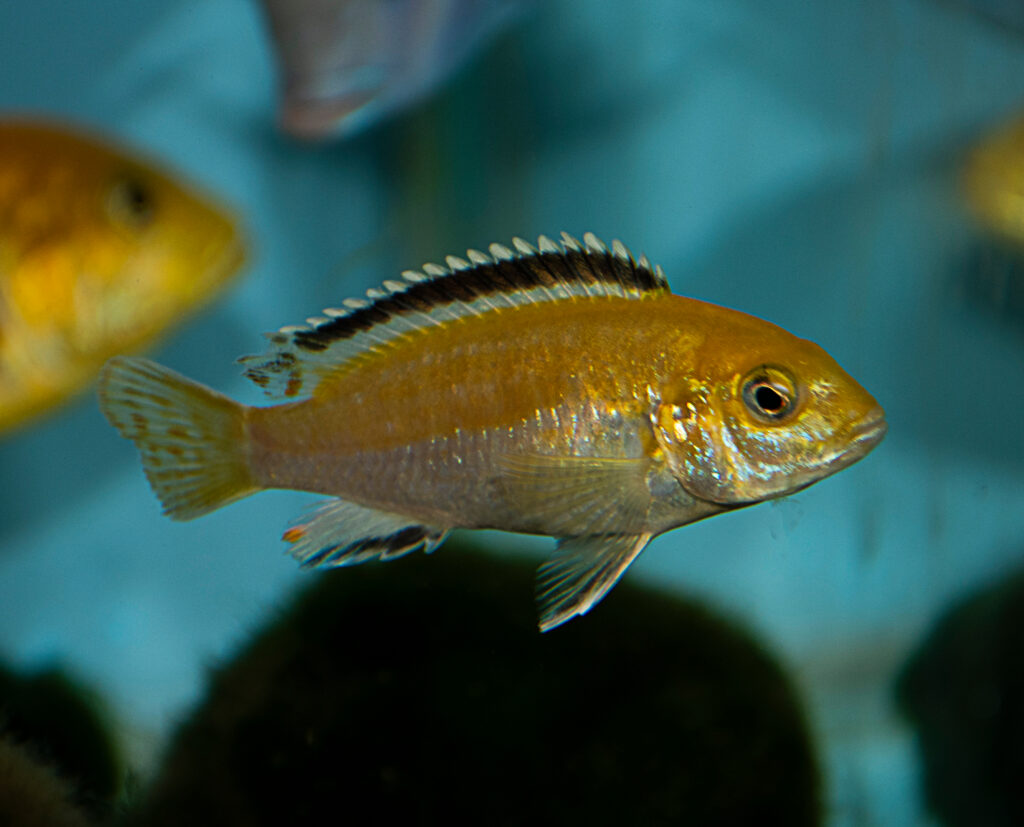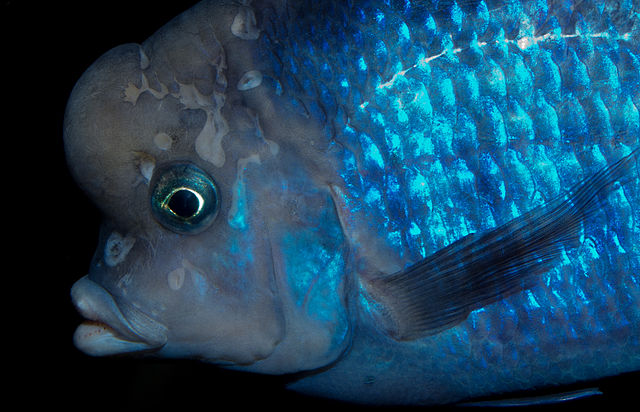African Cichlids are one of the most popular freshwater aquarium species. Their aggressive nature, large size and unique breeding method can pose a challenge for a lot of inexperienced aquarium hobbyists. In this Fish Fact profile, we are going to learn 9 facts about this amazing species so that you can determine from there if it is the right species for you.
1. Where Are African Cichlids Found?
Located in the East African Rift system between Malawi, Mozambique and Tanzania lies Lake Malawi. The lake is 11,429 square miles, accounts for 7% of the planet’s surface freshwater. It is home to more than 1,000 species of freshwater fish – including over 800 species of African Cichlids. Their unique coloration – something that makes them very desirable to aquarium hobbyists – comes in a wide variety. There are 2 additional lakes that the African Cichlid is found in as well: Lake Victoria and Lake Tanganyika. Here are a few examples of African Cichlid species:
Electric Yellow African Cichlid

Blue Dolphin Moorii African Cichlid

2. How Many Species of Cichlids Are There?
Since Cichlids range from South/Central America to Jordan, Iran, India, Sri Lanka and Africa, it’s not hard to imagine that thousands of different species of Cichlids exist. In fact, it is estimated that there are ~2,000 to 3,000 species of Cichlids worldwide. Of those ~1,650 have been scientifically described. This means that a formal description of each of the species have been made. This is usually in the form of a scientific paper. In this paper or document, the species is described in detail on how it differs from other, similar species.
3. The Evolution of African Cichlids
Today there are approximately 850 species of Cichlids that are found in Lake Malawi, Africa. It is estimated that 40 million years ago, a few different species of Cichlid fish from the Nile river found their way into 3 lakes in Africa: Lake Victoria, Lake Tanganyika and Lake Malawi. From there, as many as 500 new species emerged in less than 100,000 years. These African lakes have lots of “niche habitats” within them and as a result were the perfect breeding grounds for “adaptive radiation”.
Adaptive radiation is the process by which multiple species evolve from an ancestor through adaption. For example, the topography of the lake can determine what they eat, where they hide, how their coloration evolves, how they reproduce, how they carry their eggs and even how they care for their young. The ancestral lineage of the African Cichlid can then be traced back through a process of analyzing the genomes. More specifically through gene duplication.
So for example, one copy of a gene can be freed from selection and could adapt to a new function. It can also be turned off or even serve as a “spare” if the original gene is damaged. Alternatively, the original function can be divided, giving different roles to each copy of the gene. This can result in a split of the same species which would then be genetically different do to adaptive radiation. And that’s how the African Cichlid was able to evolve from a few species to over 850 different species in a relatively short period of time.
4. African Cichlid Reproduction: Mouthbrooding
Mouthbrooding is when the male or female holds fertilized eggs in their mouths during the incubation period. Once the baby fish or fry hatch, sometimes the parent who is the mouthbrooder will allow the fry to swim in and out of their mouths for protection purposes until they are strong enough to leave the protection of their parents.
With African Cichlids, the mother is the mouthbrooder. The mother will lay her eggs in a nest in order to allow the father to fertilize them. From there, she will pick the eggs up and hold them in her mouth for 10 to 15 days until they hatch. Once they hatch, she can hold the babies in her mouth for up to 2 weeks for additional protection. During this period of time the fry can swim in and out of her mouth in order to feed and then return for protection.
5. Hybrid African Cichlids
While the hybridization of aquarium fish is quite common, there are serious complications that can occur. As we went over in Fact #4, the evolution of this species occurred naturally through adaptive radiation. This was a direct result of the African Cichlid’s adaptability to their newly discovered environment with a diverse topography. When evolution or hybrids occur from this manner, the fish evolves in order to become stronger and survive in their environment. When fish are hybridized for colors, size, etc. that are unrelated to their environment, some serious complications can occur.
The most common issue are health issues, poor organ development and increased susceptibility to disease.. Not only is this not fair to the fish but it is unethical. In addition, selling hybrids can be very difficult since they are usually not healthy. Since African Cichlids come in a wide variety of colors, shapes and sizes, there is really no need to attempt hybrid breeding anyway of this species.
6. What is the Best Size Tank for African Cichlids?
While African Cichlids tend to do better when there are lots of them in the same tank (meaning less behavioral and aggression issues) you still need to be mindful of waste management and biological filtration. With that said, YouTuber Tazawa Tanks created a comprehensive video that covers all of the information that will help you to determine what size tank can work best for you and what species you can keep.
7. Are African Cichlids Aggressive?
Yes, the main reason is due to food and breeding. These fish are known to be territorial and require lots of hiding spots in addition to the “right amount” of males to females in order to avoid aggressive behavior due to breeding. They also require lots of food to ensure that they do not feel like their food supply will be taken over by another fish. In addition, the should all be about the same size sine the larger African Cichlids will likely consume the smaller African Cichlids. Even their color patterns can be an issue.
YouTuber KGTropicals created a comprehensive video on why African Cichlids are aggressive and how you can best manage their aggressive behavior.
8. What Do African Cichlids Eat?
In the wild African Cichlids eat a variety of foods including algae, plants, insect larvae and other fish. In the aquarium you will want to feed them a variety of foods that contain the same foods as their wild diet does. For starters, you are going to want to feed them a pellet based food that both help to enhance their coloration as well as provide enough protein to help them grow and live a long, healthy life. New Life Spectrum Cichlid Fish Formula I have seen recommended from several Cichlid keepers.
In addition to the specially formulated fish food, you can feed your African Cichlids spinach, peas, cucumbers and broccoli. Additional protein packed foods include bloodworms and brine shrimp which you can find both freeze dried and frozen at most local fish stores. Feeding your African Cichlids should occur 2 to 3 times per day. As far as the amount of food, feed them enough so that they consume all of it within a couple of minutes. Every African Cichlid aquarium will be different so you will need to do some trial and error until you figure out the right feeding regimen for your fish as they grow and as full grown adults.
Be sure to find the right balance between keeping your African Cichlids well fed in addition to maintaining good water quality.
9. African Cichlid Life Expectancy
African Cichlids can live up to 8 years in the right aquarium environment. To ensure that your fish are thriving and not just surviving, be sure to do additional research so that you can provide the best care for them as possible.
